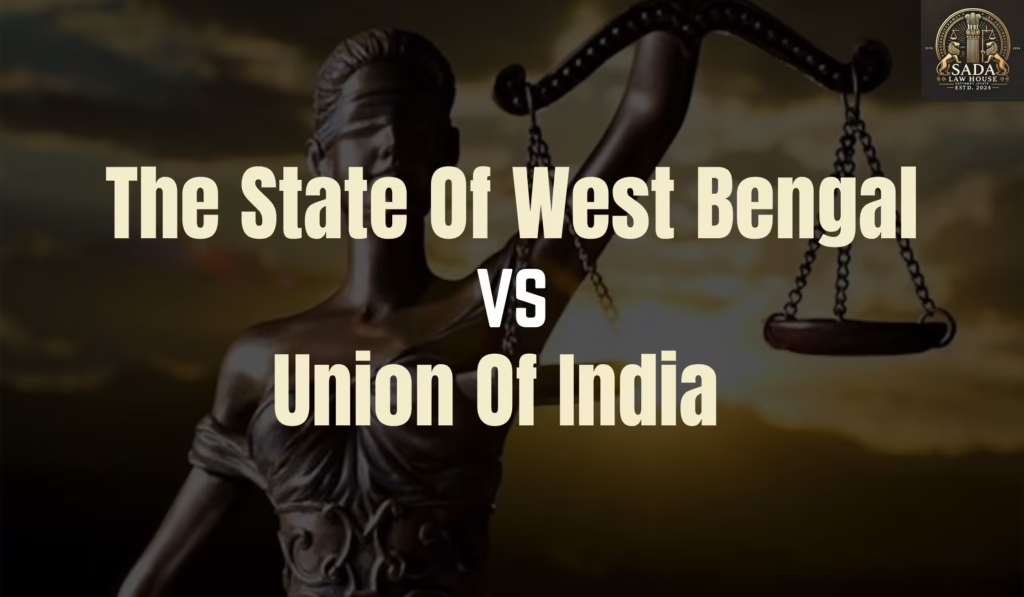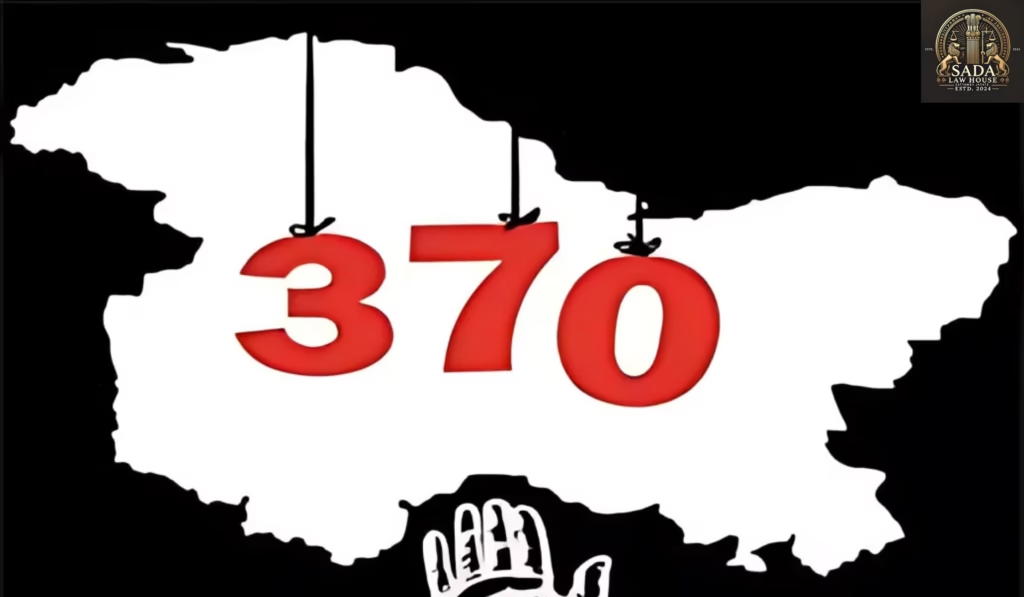One Nation, One Election: A Constitutional Reform or Threat to India’s Federalism?
Trending Today One Nation, One Election: A Constitutional Reform or Threat to India’s Federalism? Madras High Court Rules False Sexual Allegations as Mental Cruelty, Grants Divorce to Husband President Approves Inquiry Into Former CJI D Y Chandrachud Over Alleged Misuse of Power Bokaro Launches Mobile Land Court to Deliver Justice in Rural Jharkhand Supreme Court Questions Centre on Surrogacy Rules 2023: Challenge Highlights Reproductive Rights and Constitutional Concerns Delhi High Court Restrains Unauthorized Use of “TATA” Trademark in Domain Names Bombay High Court Halts BMC Demolition Over Alleged Illegal Structures Amid Procedural Dispute Madras High Court Seeks Tamil Nadu’s Response on Facial Recognition in Policing Amid Privacy Concerns Madras High Court Seeks Tamil Nadu Govt’s Response on PIL Challenging Facial Recognition in Policing Supreme Court Affirms Maternity Leave as Constitutional Right, Even for Third Child One Nation, One Election: A Constitutional Reform or Threat to India’s Federalism? 16 June 2025 REHA BHARGAV Discover the key arguments for and against the proposed One Nation, One Election policy in India. Is it a path to constitutional reform or a risk to democratic diversity? Explore its implications, challenges, and viable alternatives in this insightful analysis. Introduction: Understanding the One Nation, One Election Concept India, the world’s largest democracy, continues to innovate its electoral systems. A significant proposal in recent years is One Nation, One Election — a model where elections for both the Lok Sabha and all State Legislative Assemblies are conducted simultaneously. While the idea promises financial efficiency and administrative ease, it also poses serious questions about India’s federal integrity and democratic diversity. Is this a step toward much-needed constitutional reform or a disruption of the democratic ethos? Historical Background: When Simultaneous Elections Were a Reality India conducted synchronized elections in 1951–52, 1957, 1962, and 1967. However, this cycle was disrupted in the late 1960s due to premature dissolutions of state assemblies and the Lok Sabha, particularly during political crises in 1968–69 and 1970. Since then, election cycles have fragmented, leading to year-round polling and continuous deployment of administrative and security resources. The One Nation, One Election proposal aims to restore and modernize this earlier model for today’s complex political environment. Why the Idea Is Gaining Momentum The Indian government has revived interest in simultaneous elections, even appointing a high-level committee to study its feasibility. Some of the major reasons for this renewed push include: Continuous election cycles keeping political parties in perpetual campaign mode. Frequent enforcement of the Model Code of Conduct disrupting governance. Rising financial and administrative costs of conducting separate elections. In this context, One Nation, One Election is seen as a strategy for efficient governance, fiscal discipline, and political stability. Vision Behind One Nation, One Election The core vision of this reform includes: Reducing Election CostsSimultaneous polls would significantly reduce financial strain on the Election Commission of India and public resources. Minimizing Governance DisruptionFewer elections mean fewer interruptions due to the Model Code of Conduct, enabling smoother execution of public policies. Ensuring Political StabilityAligned election cycles could reduce mid-term collapses and encourage long-term governance. Boosting Voter EngagementA unified election event may lead to higher voter turnout and public awareness. Fostering National IntegrationSynchronizing elections may align central and state agendas, reinforcing national unity. Arguments in Favour: A Move Toward Constitutional Reform Cost EfficiencyMultiple elections throughout the year drain public funds. Synchronization could drastically lower these expenses. Administrative ConvenienceFewer deployments of personnel and security forces ease the burden on infrastructure. Reduced Governance DisruptionsFewer election-related pauses mean continuous policy implementation. Long-Term Policy FocusGovernments can focus more on governance rather than campaigning. Enhanced Voter TurnoutA consolidated election day could improve voter participation. Curbing PopulismReduced election frequency may push parties toward long-term reforms instead of short-term populism. Strengthening National CoherenceA unified election process might encourage a more cohesive national political narrative. Challenges and Criticisms: Risk of Electoral Disruption Federal ImbalanceStates may lose control over their individual electoral timelines, weakening federalism. Mid-Term CollapsesDissolutions of assemblies mid-term would break the cycle, complicating continuity. National vs Regional IssuesSimultaneous elections could dilute local issues, favoring national narratives. Voter OverloadToo many choices at once may confuse voters and reduce focus on individual candidates. Electoral InequalityRegional or smaller parties may struggle to compete with national parties. Logistical OverstretchManaging simultaneous polls across India’s vast and diverse landscape is a colossal administrative challenge. Democratic DilutionMega-elections might diminish community-level engagement and local issues. Legal and Practical Challenges To implement One Nation, One Election, significant amendments to the Constitution of India—including Articles 83, 85, 172, and 174—are necessary. These require not only a two-thirds majority in Parliament but also ratification by at least half the state legislatures. Practical complications include: Managing early dissolutions of assemblies or Parliament. The risk of imposing President’s Rule to maintain synchronization. Enormous logistical coordination required by the Election Commission. Political consensus, especially among regional parties concerned about autonomy, remains a major hurdle. Alternatives to One Nation, One Election Clustered ElectionsGroup states with similar election cycles for staggered synchronization. Fixed Election DatesCreate a structured calendar to reduce unpredictability while maintaining autonomy. Staggered Election WindowsHold elections within fixed time frames instead of exact dates. Election Infrastructure UpgradesEnhance the capabilities of the Election Commission for efficient multi-election management. Political ReformsStrengthen anti-defection laws to prevent early dissolutions. Phased ImplementationStart by synchronizing a few states and expand gradually based on results. Conclusion: Reform or Risk? The proposal for One Nation, One Election presents a double-edged sword. It offers efficiency, cost reduction, and focused governance, yet threatens federal autonomy and electoral diversity. Legal amendments, logistical coordination, and political consensus are essential for any successful implementation. Instead of a hasty overhaul, a gradual, inclusive approach with interim reforms—like clustered elections and fixed dates—may better serve India’s democratic and federal structure. Ultimately, reforms must enhance, not compromise, the democratic fabric of the nation. References: – Election Commission of India – Indian Constitution – PRS Legislative Research – India Today – Firstpost – AAP – ORF – News18 – iPleaders – The Hindu – Times of India Leave a Reply Cancel Reply Logged in as Sada
One Nation, One Election: A Constitutional Reform or Threat to India’s Federalism? Read More »



